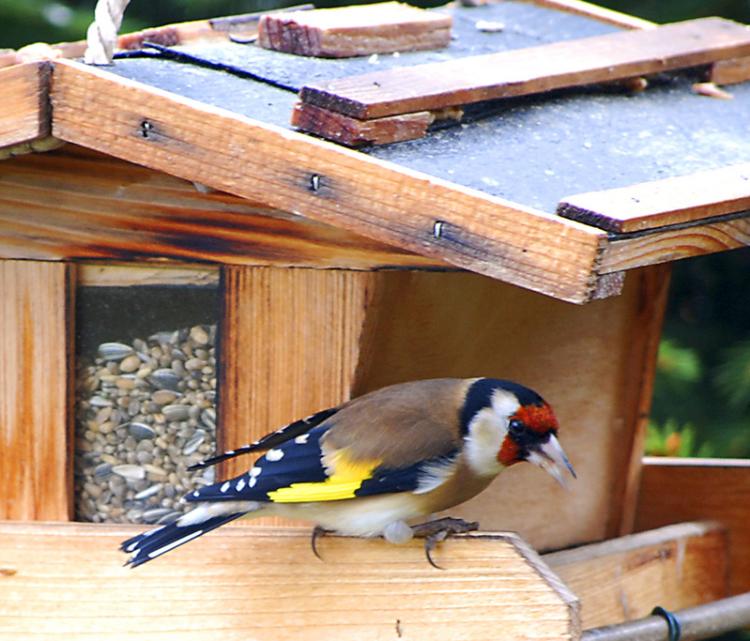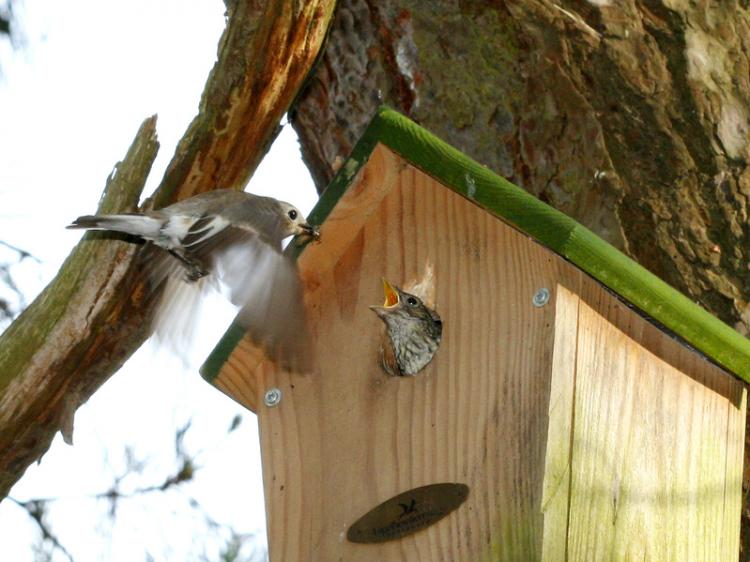Many people, especially children, want to provide food for local songbirds during the winter months, and of course, it is always a delight to be able to observe the birds. The Hamburg Environmental Organization of Germany (NABU) offers tips on how to avoid mistakes when feeding the bird population.
Biologist Stephan Zirpel, CEO of the Hamburg NABU, stated, “We primarily recommend a feeding silo because it protects the food from moisture and inclement weather,” and added, “ in addition, the silo prevents food contamination with bird droppings.”
Special bird feed which can be purchased commercially will entice birds living in the wild—those garden birds preferring grains and seeds—to come to the feeder. They include chaffinches, bullfinches, and sparrows.
Blackbirds, robins, and hedge sparrows prefer softer foods such as pieces of fruit, raisins, or dried wild berries. A simple wooden grid can hold pieces of apple. Other like the Meisenknödel or Meisenringe (fatballs), are attracted to grids stuffed with peanuts.
Grain and seed mixtures imported from abroad can lead to the introduction of foreign plants. “One has to be particularly aware of the origin of any seeds,” said Zirpel. “Cheap food mixtures often contain allergy-causing common ragweed seeds or other undesirables.”
Feeding all year long is not recommended and only benefits the older birds. Even the young of the seed-grain-eating birds require insects and worms, crucial to their healthy development.
The Environment Requires More
“Those who believe feeding the birds is part of protecting the environment are mistaken,” said Zirpel. With the exception of the house sparrow, feeding is only for those birds that are seldom in danger, anyway. Feeding stations in towns and villages usually attract up to 15 kinds of birds, primarily titmice, finches, robins and blackbirds. Their numbers have been steady, and, for the most part, they are not endangered species.
“The primary focus ought to be the protection of the bird realm by preserving many and various natural environments for them. They often lack proper breeding conditions, natural food sources and hiding places. Brood boxes at one’s house—on a balcony or in the garden—provide a breeding opportunity for the hawk swallow, blue tit, great tit, black redstart, and other birds.”
Put Up Breeding Boxes Now
According to NABU (Nature Conservation), brood boxes need to be in place during the winter, because many birds are already looking for potential breeding places, and others use these boxes to roost.
Indigenous Shrubs and Bushes
One can raise indigenous shrubs and bushes in the garden, like hawthorn, red dogwood, and others. The songbirds find refuge and safety in these and enjoy the berry harvest during autumn.
Background
The mission of the German Society for Nature Conservation (NABU) is to bring people who are interested in nature together in the hope that they will become active environmentalists.
NABU states on its Website, “We want our future generations to have an earth that one can live on, that has a diverse population, good air, clean water, a healthy environment, and resources that support life.









